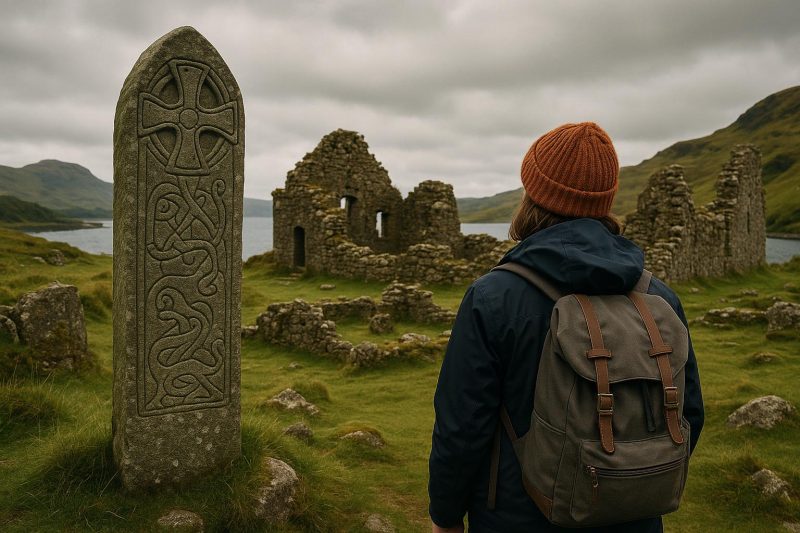Understanding the Viking Presence in Argyll
The region of Argyll in western Scotland has long been a captivating area for historians and archaeologists due to its rich Viking heritage. Known for their extraordinary seafaring skills, the Vikings extended their influence across Europe from the late 8th to the early 11th centuries. Their impact on Argyll was both profound and multifaceted, leaving behind a wealth of historical and cultural artifacts that continue to be subjects of study today.
Historical Background
The Viking Age is marked by the expansion of Norsemen from their homelands in present-day Scandinavia to territories across Europe. The first recorded Viking attacks on the Scottish coastline occurred in the late 8th century, initiating a series of raids that would eventually evolve into settlements. By the early 9th century, these warriors transformed into settlers, establishing communities that either assimilated with or displaced the indigenous populations. This gradual transition from raiders to settlers significantly influenced the cultural and historical landscape of the regions they occupied. Their influence resonates through place names, archaeological finds, and historical documents. To gain a deeper understanding of the Viking Age, readers can explore the Encyclopaedia Britannica’s article on Vikings.
Key Viking Sites in Argyll
Argyll is dotted with several important sites that bear testament to Viking activity. These sites serve as windows into the past, providing rich insights into the extent of Viking settlement and integration within Scotland.
Kildalton Cross, Islay
An iconic example of the Norse influence is the Kildalton Cross on the Isle of Islay. This monumental high cross, dating back to the early 9th century, stands as a symbol of the Norse-Gaelic cultural synthesis of the era. Although its craftsmanship is predominantly Christian, distinctive elements of Norse artistry are evident in its design. The cross exemplifies how the Norse and local Gaelic cultures intermingled, creating a unique cultural tapestry. For more details on Islay’s storied past, interested readers can visit the Islay Info page.
Lorn’s Viking Connections
The region of Lorn exemplifies the strategic importance of coastal locations for Viking settlers and traders. Situated on Scotland’s western coast, Lorn’s geographical position made it a favorable site for Norse activities. Archaeological expeditions in the area have unearthed Norse ship settings, burial sites, and everyday artifacts, offering a glimpse into the maritime lifestyle that defined the Vikings.
Brooches and Other Artifacts
Within Lorn, excavations have brought to light a collection of brooches and ornaments distinctly Norse in origin. These artifacts are not only indicative of the Viking presence but also provide invaluable insights into the daily life and craftsmanship of the Norse settlers. The prevalence of these items underscores the extent to which the Vikings established their way of life within this Scottish landscape.
The Vikings’ Legacy in Argyll
Viking settlers have left a lasting legacy in Argyll, particularly noticeable in place names that retain Norse roots. This linguistic influence paints a vivid picture of the extensive Norse settlement and their cultural assimilation with the existing Gaelic community. Studies focusing on linguistics reveal the depth of Norse impact on the local language. For those interested in exploring the linguistic heritage further, resources from the National Library of Scotland offer comprehensive insights.
Preservation and Exploration
The preservation of these ancient sites plays a crucial role in ongoing historical and archaeological research. Advances in technology, especially in areas like 3D mapping and remote sensing, are being leveraged to discover and document evidence of Viking influence. Numerous studies and projects work towards thoroughly understanding the scope of Viking activities in Scotland, striving to preserve this heritage for future generations.
Visiting the Sites
For those with a keen interest in exploring Viking heritage firsthand, visiting these historic sites can be a rewarding experience. Before embarking on such visits, it is crucial to acquaint oneself with accessibility information and guidelines on site preservation to ensure respectful and responsible exploration. Many sites are open to the public and offer informational tours and exhibits that delve into the area’s Viking history. Resources like the Visit Argyll and the Isles website provide comprehensive details on how to access and explore these significant historical locations.
In conclusion, the region of Argyll provides a fascinating insight into the Viking past with its historic landscapes and remarkable artifacts. These sites continue to offer scholars and the public alike a deep understanding of the historical narratives shaped by Viking influence in Scotland. From archaeological discoveries to linguistic remnants, the Viking presence in Argyll is an enduring legacy that illustrates the complexity of cultural integration and evolution over centuries.

